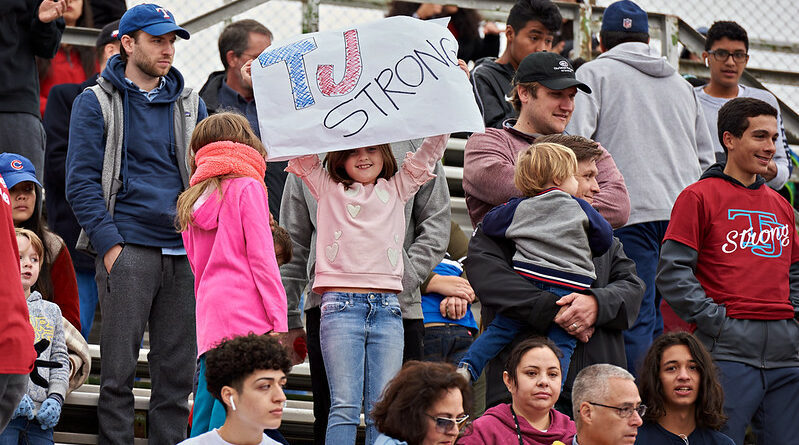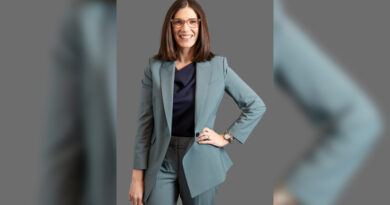It Wasn’t ‘Fine,’ But TJ Won’t Make Excuses
We spoke to Thomas Jefferson High School’s Sandi Massey, who began her school year with a tornado that destroyed her school, moved her students and staff to a temporary (but long-term) space at Thomas Edison Middle School, and then began school after spring break in a hastily crafted plan for virtual lessons after a pandemic shut everything down.
PN: So that night of Oct. 20 – you knew a storm had come through, but what went through your head?
SM: Honestly, the first thing that went through my head was denial. I really didn’t think even seeing the news and seeing that, you know, North Dallas had been hit and that it was likely that TJ was in the area of the tornado. Still, I literally was like, “OK, so I’ll drive to work a little bit earlier. I’ll go see, you know, what needs to be dragged out of the parking lot so people can drive in and clean up the mess,” and then started getting ready for another school day. It was like, “this is going to be fine.” It’s going to be a little debris. Don’t worry about it. We’re going to have school – that’s in my mind that, and then on my way to work that morning, I think I got up and left around five in the morning.
Then my facilities guy called me and started sending me pictures. And he was like, “Massey, do not come here. Do not come here. You cannot even get in there’s policemen are starting to block off the area.”
I was like, “Oh, ok – this is not what I expected.” And then it was shortly after that, that the district said, yeah, why don’t these three schools meet us at Edison Middle School for a meeting at 10. And so I just actually went straight to Edison at that point and just sat in the parking lot until our meeting.
But yeah, it was like at first, denial, and then the reality of, “OK, so …” Well, in my reality, it was like, “OK this is going to take a few, and then you know, we’ll fix the windows, clean up the parking lot and we’ll be back. We’ll have to have maybe some more portables brought in, but it just seemed like we would be back. And then it was like really reality of this is not even just like a few months. This is a few years. By the time we get back there, it will be almost four years. It’s not four years, 3.5 to four years before we get back in the building from the time of the tornado.
PN: Obviously, there are the immediate needs of not only your kids need a place to go to school, but a lot of them have been displaced because of the tornado – they lived in the path of the tornado. So what is it like to try to manage all of that?
SM: Everything was overwhelming, honestly. And of course I couldn’t ask for better support – the district was amazing. The education foundation was amazing. I mean, we have partnerships that just, everybody just stepped up, the alumni, Fidelity, people just stepped up and wanted to help, but that also became extremely overwhelming. For at least two months, it felt like I was not a high school principal, but I was the president of a nonprofit.
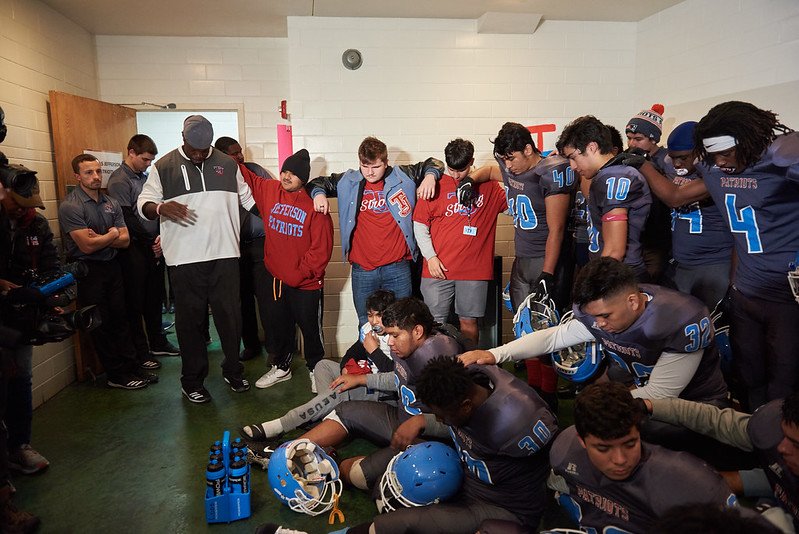
And just working through volunteers and supplies coming in, you know, schools wanting to come and drop off personally and meet me. And it was, it was really overwhelming. And then on top of all that you do have your students who are, you know, they’re being displaced, they’re losing businesses, they’re losing cars, they’re losing homes in the process. And then teachers who are super overwhelmed and not sure, you know, if they can make the drive, because now it’s an added another 45 minutes to their already long commute. We actually lost about 20% of our teaching staff this summer, just teachers that needed to work closer to their home, knowing that this is another, two and a half, three years here at Edison. And so of course I totally understand that, but it did take a toll. It took an emotional toll.
It was a really hard emotional process. There are many, many days I held it together all day long. And then as soon as I would get in my car, it was just like a wave of emotion where it just hit me and I would just cry all the way home. Like it was just so I’m getting emotional thinking about it. It was so hard.
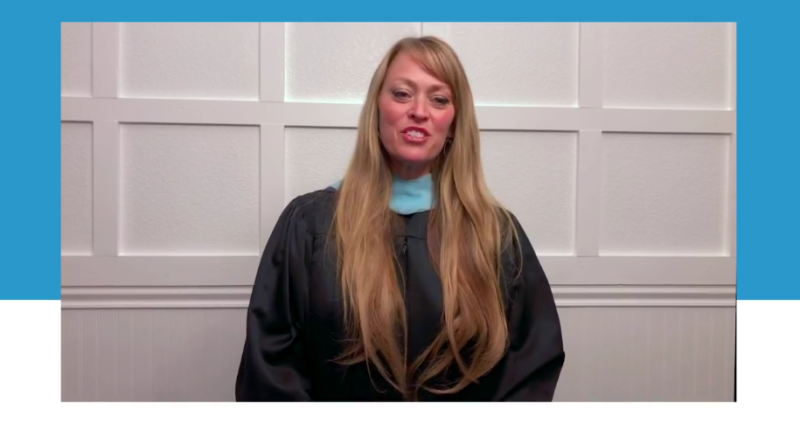
PN: It can be difficult to keep high school students engaged. And then you have a pandemic, and a major upheaval, and a lot of the kids in your school needed to work – to help their families. How do you navigate that when you’ve got two issues that compounds the problem?
SM: Well, I mean, we worked really hard right after the tornado – one of the very first, well, it was the first thing we did after we found out we were going to be at Edison, was instead of teachers spending that day, setting up their classrooms, we all drove to the neighborhood of TJ and started just, you know, anting. We spread out like ants and just went all over the place to try to connect with our kids, let them know when school would start, that we want them back. We, we want to make sure that they’re, you know, get their transportation information. And so we’ve worked really hard to make sure that TJ kids knew that we want them, that we care about them and that we’re going to help them support them. And, and so that was like a thing from the beginning. My staff really does love these kids.
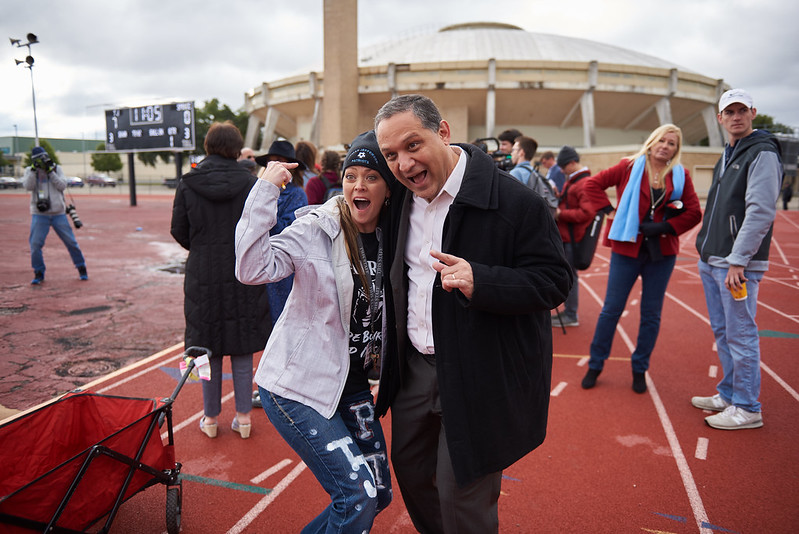
And then over COVID, it was kind of a double whammy because even the kids who lost their homes or businesses or vehicles in the storm, they were able to manage, you know, staying with other family or friends, or, you know, even some stayed in shelters at transportation, got them to Edison. It was a whole other ball game when COVID hit, because our demographic is mostly families who can’t get that income tax break, you know, they can’t get unemployment. And so they are losing their jobs because restaurants aren’t open or, you know, landscaping has stopped for a bit and the kids are taking up the flag and they’re working everywhere they can to raise money. So it’s been really a challenge for our students.
And what we’ve tried to communicate on the big picture is that, you know, there’s nothing more valuable than your education and it will get you so much further than without it. So even if you have to stop, now, you’ve got to finish. So whatever you need to do to finish, you gotta do it. So there are a few kids that took summer classes and finished up in the summer. And then, you know, hopefully, kids will join back in the fall and, and finish finish. But, you know, it’s a really hard thing to tell anyone that, yeah, you should not go work – or you should work full time and go to school full time so that you can get educated and take care of your family. And there’s a lot of kids that are motivated to do both and they do both. But there’s a lot of kids that aren’t.
The thing about that is just trying not to make excuses. We do know that the tornado and COVID impacted us, but, you know, we have a lot of pride and we want to do well, regardless of our circumstances. So I just don’t want it to seem like we’re making excuses.
We work very hard and we know that we can be successful regardless, but so we just know we have a longer, you know, a bigger, a bigger hill to climb a year and it’s going to be hard starting with COVID and online learning, but it is what it is. And we’re going to take this year if it’s a full testing year and we’re going to do everything we can to catch our kids up.
We take that responsibility very heavy. That is something that is close to our hearts. And we just had a conversation with the leadership team this morning, before this phone call that we’re not gonna make excuses for our situation. We’re going to, you know, pull our bootstraps up and we’re going to move forward and do everything we can to prepare our kids for a great future.

